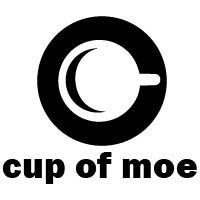We may earn money or products from the companies mentioned in this post.
I took a trip to Nashville recently for a friend’s wedding, and because I flew there, I had to rely on Uber for transportation. Upon arriving at the airport, I inquired about a taxi before consulting the Uber app and finding about an eight dollar savings. Throughout my weekend in Nashville, I either walked or Uber-ed it up, and couldn’t believe how cheap transit was compared to a cab. My perceived savings was amplified when ride sharing.
At times, rides even seemed too inexpensive, and I questioned the business model. One Uber driver picked me up in a Dodge Ram 1500 crew cab pick up truck. When I hopped in, he explained that it took him 10 minutes to reach my location. My destination was a 15 minute drive, and I paid 9 dollars. So for 25 minutes of driving, he reaped 9 bucks, which is paltry when you factor in gas money (I’d warrant not spectacular in a Dodge Ram crew cab), and however much Uber skims off the top. The numbers didn’t add up; it seemed cheap, too cheap.
Interestingly, a recent study using big data comparing Yellow Taxi and Uber trips in New York City seems to suggest the opposite. A great article by Forbes contributor Federico Guerrini explained that researchers from the University of Cambridge in the UK and the University of Namur in Belgium revealed Yellow Cabs to be roughly $1.40 less than comparable Uber services (the UberX, the least expensive tier).
These findings completely clash with my experience, where a cab ride from the airport was almost twice as expensive as Uber’s price. So what gives? Well, as Gunerrini points out, data didn’t specify times and days, so peak hours aren’t considered in the study. Furthermore, all the data was gleaned from New York, and undoubtedly the savings or lack thereof varies from city to city. Ultimately, there are multiple variables that influence whether Uber or a Yellow Taxi is best, so don’t assume automatically assume you should snag that Uber.
Gunierri’s article also mentions an uber-helpful app, Openstreetcab (Android, iOS), that tells users an Uber or traditional cab is more economical. Note however that it’s only compatible with NYC transit. Hopefully we’ll see Openstreetcab ported to other cities as well, or similar apps. While there’s no Openstreetcab for Nashville, I can pretty much tell you that Uber is significantly more affordable. Comparing Uber with standard taxicab prices is a neat concept, and one that will hopefully be applied in different cities.
Have an experience with Uber prices you’d like to share? Leave a comment below, or Tweet your thoughts at us!
This post may contain affiliate links. We are a participant in affiliate programs such as the Amazon Services LLC Associates Program, an affiliate advertising program designed to provide a means for us to earn fees by linking to Amazon.com and affiliated sites. However, all products are thoroughly tested and reviews are honest and unbiased.

